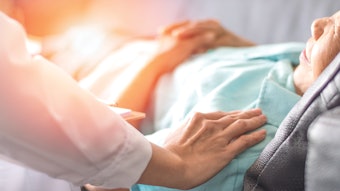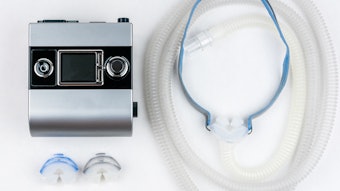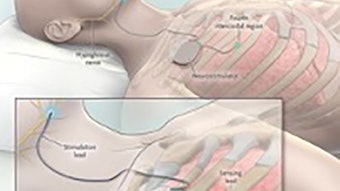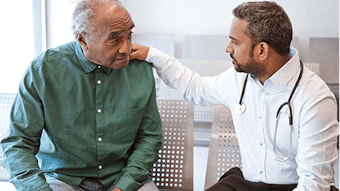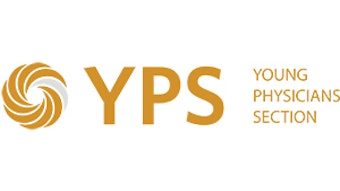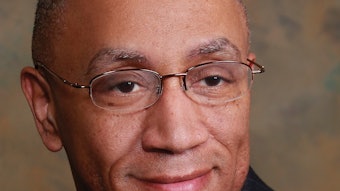Disequilibrium of Aging
Disequilibrium and associated balance disorders are common in older patients, with a prevalence of about 30 percent in those over the age of 60 years, increasing to 50 percent in those over the age of 85 years.
Brian J. McKinnon, MD, MBA, MPH
Disequilibrium and associated balance disorders are common in older patients, with a prevalence of about 30 percent in those over the age of 60 years, increasing to 50 percent in those over the age of 85 years.1,2 Disequilibrium is considered a significant factor in unintentional falls, with traumatic brain injury (TBI) death a concurrent injury particularly associated with falls in older patients. The Centers of Disease Control and Prevention (CDC) has found that the rate of fall-related TBI deaths in those over the age of 75 years is eight times the rate of those 55-74 years. In the period the CDC reviewed (2008-2017), not only did the national age adjust rate of fall-related TBI deaths increase 17 percent overall, but those over the age of 75 years had the greatest increase in fall-related TBI deaths.3

The evaluation of the older patient with disequilibrium is challenging as terms such as “disequilibrium” and “dizziness” may refer to rotary symptoms, as well as anxiety, lightheadedness, and gait disturbances. These multiple concerns may reflect cardiovascular disease, neurological disease, musculoskeletal disease, sensorimotor dysfunction, and/or psychological concerns, not just vestibular dysfunction.4-9 Adding the expected concurrent aging-related changes in central integration, vestibular, and proprioceptive functions and sarcopenia, the complexity of assessing and managing the older patient with complaints of dizziness and disequilibrium is daunting.10
It is helpful when assessing the older patient with disequilibrium to take an effective, targeted history. One approach to consider is TiTrATE (timing, triggers, and target examination). Characteristics of the dizziness are clarified when using this method by understanding the timing (onset, duration, evolution), triggers (actions, motions, situations), and duration (chronic vs. acute), allowing for categorization of dizziness as being triggered episodic, spontaneous episodic, post-exposure acute, and spontaneous acute.11,12 Associated information on polypharmacy, tinnitus, headache, and hearing loss is useful in understanding the causes of the patient’s dizziness. Complaints of double vision, slurred speech, and difficulty walking may suggest a brainstem or central nervous system cause.11,12 In those older patients who have suffered a fall, asking about the circumstances of the fall—the why, what, how, where, and when of the fall—and associated injuries is important because the information is useful not only in understanding the older patient’s complaint of dizziness, but for developing a plan for fall prevention.13
Physical examination and focused diagnostic testing clarify the likely cause or causes considered within the differential developed by the older patient’s history. Complaints of episodic symptoms can suggest conditions such as orthostatic hypotension, benign paroxysmal positional vertigo (BPPV), and/or central vertigo, so an exam may include orthostatic testing, Dix-Hallpike maneuver, and neurological exam looking for the four Ds: dysarthria, dysphagia, dysphonia, and dysmetria.14 For those with more acute symptoms, a physical exam may include a head impulse test, along with evaluation for nystagmus, and skew (vertical deviation with covering and uncovering the eye may suggest a central cause).12 In older patients with a history of falls, assessing the condition of the patient’s feet and footwear, lower extremity strength, proprioception, along with formal balance and gait assessment (e.g., timed up and go test, Berg balance scale, and short physical performance battery [SPPB]) may direct diagnosis as well as prevention. Testing of visual acuity, imaging, and hearing testing as clinically indicated should be considered in those without or with history of falls,13-15 keeping in mind that some ischemic causes of disequilibrium cannot be excluded by negative MRI imaging.16
Disorders such as vestibular neuritis and Ménière’s disease may be effectively managed with judicious prescribing of vestibular suppressants after other diagnoses such as orthostatic hypotension, BPPV, polypharmacy, and central vestibular dysfunction have been addressed or eliminated.12 Physical therapy is a mainstay for both acute and chronic forms of disequilibrium, as well as for the assessment of fall risk and development of mitigation regimens. The CDC’s Stopping Elderly Accidents, Deaths, & Injuries (STEADI) initiative provides guidance on screening older patients for fall risk, identifying modifiable risk factors and effective interventions.3
In closing, otolaryngologists should consider talking to their older patients about the risks of disequilibrium and falls as a routine to help older patients and their families prevent falls and fall-related injuries. When appropriate, suggesting exercises that incorporate balance, strength, and gait activities, (e.g., tai chi) and the removal or elimination of trip hazards takes little time and can go a long way toward making our older patients’ lives safer.3
References
- Jönsson R, Sixt E, Landahl S, Rosenhall U. Prevalence of dizziness and vertigo in an urban elderly population. J Vestib Res. 2004;14(1):47–52.
- Barin KP, Dodson EE. Dizziness in the elderly. Otolaryngol Clin North Am. 2011;44(2):437–54. doi: 10.1016/j.otc.2011.01.013
- Peterson AB, Kegler SR. Deaths from fall-related traumatic brain injury — United States, 2008–2017. MMWR Morb Mortal Wkly Rep. 2020;69:225–230. doi: 10.15585/mmwr.mm6909a2
- Jahn K, Kressig RW, Bridenbaugh SA, Brandt T, Schniepp R. Dizziness and unstable gait in old age: etiology. Diagn Treat Deutsches Arzteblatt Int. 2015;112(23):387–393.doi:10.3238/arztebl.2015.0387
- Friedman SM, Munoz B, West SK, Rubin GS, Fried LP. Falls and fear of falling: which comes first? A longitudinal predictionmodel suggests strategies for primary and secondary prevention. J Am Geriatr Soc. 2002;50(8):1329–1335.
- de Amorim JSC, Leite RC, Brizola R, Yonamine CY. Virtual reality therapy for rehabilitation of balance in the elderly: a systematic review and meta-analysis. Adv Rheumatol. 2018;58(1):18. doi:10.1186/s42358-018-0013-0
- Maarsingh OR, Dros J, Schellevis FGMDP, van Weert HC, et al. Causes of persistent dizziness in elderly patients in primary care. Ann Fam Med. 2010;8(3):196–205. https://doi.org/10.1370/afm.1116doi:10.1370/afm.1116
- Jacob RG, Furman JM, Durrant JD, Turner SM. Panic, agoraphobia, and vestibular dysfunction. Am J Psychiatry. 1996;153(4):503–512.
- Kerber KA, Brown DL, Lisabeth LD, Smith MA, Morgenstern LB. Stroke among patients with dizziness, vertigo, and imbalance in the emergency department: a population-based study. Stroke. 2006;37(10):2484–7. doi:10.1161/01.STR. 0000240329.48263.0d
- Woo N, Kim SH. Sarcopenia influences fall-related injuries in community-dwelling older adults. Geriatr Nurs. 2014;35(4):279–282. doi:10.1016/j.gerinurse.2014.03.001
- Newman-Toker DE, Edlow JA. TiTrATE: a novel, evidence based approach to diagnosing acute dizziness and vertigo. Neurol Clin. 2015;33(3):577-599, viii. doi:10.1016/j.ncl.2015.04.011
- Muncie HL, Sirmans SM, James E. Dizziness: approach to evaluation and management. Am Fam Physician. 2017;95(3):154–562.
- Panel on Prevention of Falls in Older Persons, American Geriatrics Society and British Geriatrics Society. Summary of the updated American Geriatrics Society/British Geriatrics Society clinical practice guideline for prevention of falls in older persons. J Am Geriatr Soc. 2011;59(1):148–57. doi:10.1111/j.1532-5415.2010.03234.x
- Newman-Toker DE. Symptoms and signs of neuro-otologic disorders. Continuum (Minneap Minn). 2012;18(5 Neuro-otology):1016–1040. doi: 10.1212/01.CON.0000421618.33654.8a
- Thurman DJ, Stevens JA, Rao JK. Practice parameter: assessing patients in a neurology practice for risk of falls (an evidence-based review): report of the Quality Standards Subcommittee of the American Academy of Neurology. Neurology. 2008;70(6):473–479. doi:10.1212/01.wnl.0000299085.18976.20
- Saber Tehrani AS, Coughlan D, Hsieh YH, et al. Rising annual costs of dizziness presentations to U.S. emergency departments. Acad Emerg Med. 2013;20(7):689–96.https://doi.org/10.1111/acem.12168. doi:10.1111/acem.12168

